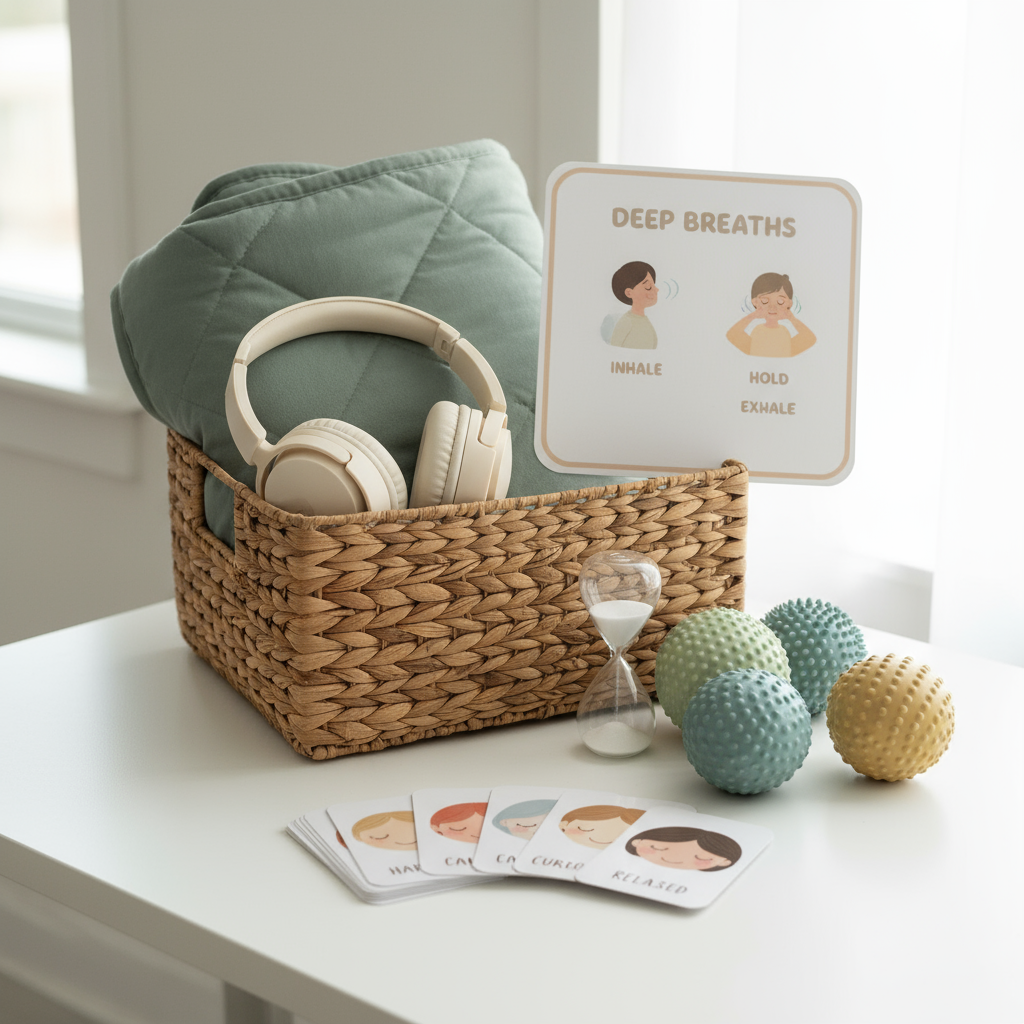
How to Choose a Fidget Tool for ADHD: A Guide for Parents and Educators
Share
The Secret to Focus Isn't Sitting Still—It’s the Right Fidget Tool.
For individuals with ADHD, the urge to move isn't a distraction; it's often a crucial method of self-regulation. Fidgeting serves as a quiet background task that occupies the brain's excess energy, freeing up the main focus centers to concentrate on listening, learning, or working.
Here at calmgaroo, we understand that supporting neurodiversity means providing the right tools. Our resources are designed by educators and backed by psychology to help students with ADHD and anxiety thrive.
But with endless options available, how do you find the right fidget tool? It’s not about finding the most popular item—it’s about matching the tool to the individual's sensory needs, environment, and specific focusing challenge.
Here is your practical guide to choosing the perfect fidget tool.
Step 1: Understand the 'Why'—What Sensory Need is Being Met?
Before you shop, observe the individual's natural fidgeting habits. This tells you what kind of sensory input they are subconsciously seeking:
| Fidgeting Behaviour | Sensory Need | Ideal Fidget Tool Category |
| Pinching, pulling, or picking at skin/clothes | Tactile (texture) and Fine Motor Tension | Putty, textured balls, stretchy strings, textured jewelry. |
| Shaking legs, tapping feet, bouncing | Movement (Kinetic) and Vestibular Input | Resistance bands for chairs, foot fidgets, quiet hand fidgets that allow continuous motion. |
| Clicking pens, tapping desk, grinding teeth | Auditory and Oral/Proprioceptive Input | Clickers, chewable jewellery, discreet desk fidgets (e.g., gear fidgets). |
| Twirling hair, spinning objects | Visual and Fine Motor Repetitive Action | Fidget spinners (quiet ones!), interlocking chains, tangle toys. |
Step 2: Choose the Right Tool Type
Fidget tools can be broadly categorised by the primary type of interaction they require:
1. The Tactile Tool (Texture and Pressure)
-
Best For: Individuals who seek deep pressure, rough textures, or want to squeeze/manipulate something.
-
Examples: Stress balls, therapy putty, squishy toys, textured rings, or smooth 'worry stones.'
-
Pro Tip: Look for varying resistance. A soft, squishy toy is great for a calm corner, while a high-resistance putty is better for releasing stress or anxiety.

2. The Kinesthetic Tool (Movement and Repetition)
-
Best For: Individuals who need constant, repetitive movement to stay grounded.
-
Examples: Fidget cubes, interlocking chains, orbiters, or quiet spinners.
-
Pro Tip: Tools that keep both hands engaged can be excellent for helping a restless body stay seated and focused on listening.

3. The Discreet Tool (Stealth and Quiet)
-
Best For: Classrooms, meetings, or quiet environments where sound is a major distraction.
-
Examples: Pencil toppers, silent clickers, chain links that fit in a palm, or desk-based texture strips.
-
Pro Tip: Discretion is key. Choose tools that are small and operate silently to avoid becoming a distraction to others.

4. The Resistance Tool (Proprioceptive Input)
-
Best For: Individuals who need to apply pressure or resistance (e.g., they often push against objects or clench their fists).
-
Examples: Stretchy bands or cords, high-density foam balls, or chewable tools.
-
Pro Tip: Proprioceptive input is calming. Tools that require a bit of physical effort—like stretching a resistance band—can be highly regulating.

Step 3: Test and Evaluate the Fidget Tool
Finding the perfect tool is often a process of trial and error. To ensure a tool is effective, ask three questions:
-
Is it a regulator or a distractor? A good tool should keep a small part of the brain busy, allowing the rest to focus. If the person is staring intently at the tool or constantly dropping it, it might be too engaging and is acting as a distraction.
-
Is it socially appropriate? Especially for older children and adults, look for tools that are easy to conceal or look like regular desk items to prevent self-consciousness.
-
Is it durable and safe? Since fidget tools are constantly handled, they must be high-quality and free of small parts that could be a choking hazard, especially in school settings.
Find Your Next Fidget Tool at calmgaroo
At calmgaroo, our Fidget Tool Collection is thoughtfully curated for the classroom and home. We prioritise tools that are quiet, durable, and genuinely supportive of focus and emotional regulation.
We offer:
-
Resources co-created with teachers and psychology graduates.
-
Tools specifically designed to support neurodiversity, including ADHD and anxiety.
-
NDIS-friendly invoicing for Australian families.
Ready to find the perfect match?
